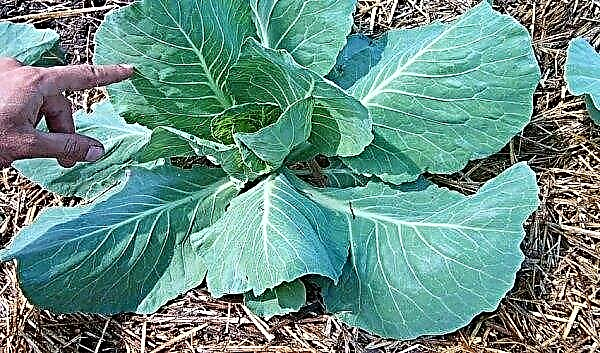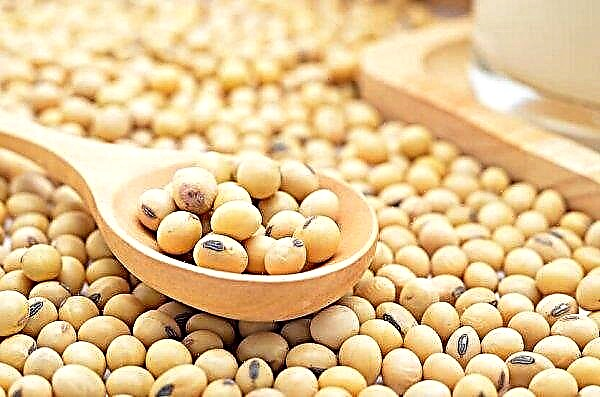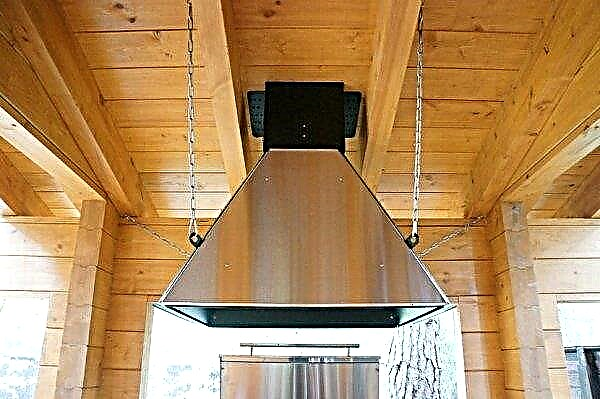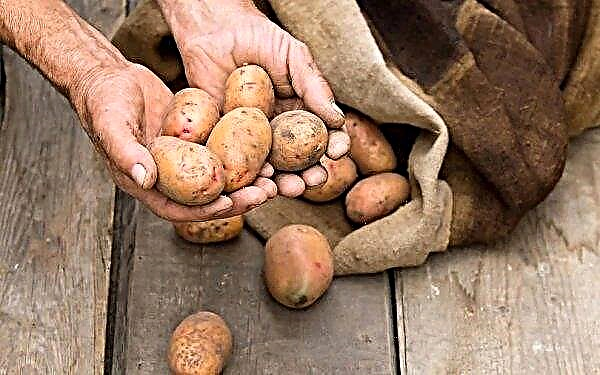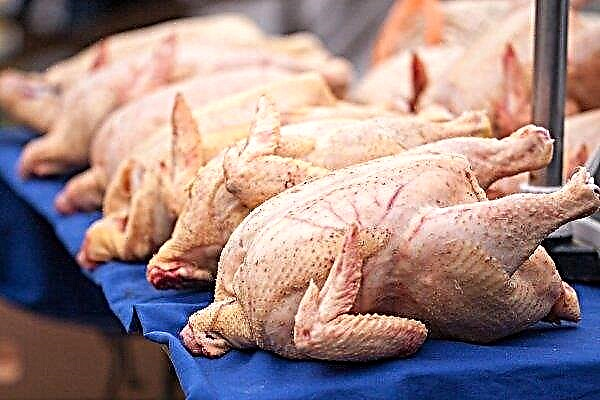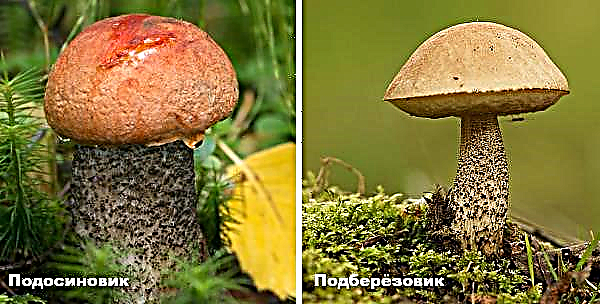The quality of the future crop is always very dependent on the soil on which it will be grown. And greenhouse cucumbers are no exception in this matter. Traditionally, the soil is prepared in several stages, but today we will focus on the autumn preparation of cucumber beds in greenhouses.
Why do we need soil preparation in a greenhouse for planting cucumbers
Autumn preparation will allow the gardener to significantly save time immediately before planting seeds.
- Its main advantages include:
- reduced likelihood of cucumber disease;
- the destruction of pests, their larvae, which in the future could spoil the plantings;
- improvement of soil quality due to useful top dressing.
As a result, the complex of these factors provides a rich and healthy crop of cucumbers in the greenhouse.
Did you know? In Ancient Greece there was a "city of cucumbers" - Sikion. Residents of this ancient city cultivated cucumbers in greenhouses all year round and salted them in wooden tubs.
What should be the soil for cucumbers in a greenhouse
Cucumbers, as a culture, have their own requirements for the land in which they plan to grow. The preparation of the garden bed should be aimed at creating just such comfortable conditions, so for a start it is worth exploring what is useful for cucumbers in greenhouses:
The preparation of the garden bed should be aimed at creating just such comfortable conditions, so for a start it is worth exploring what is useful for cucumbers in greenhouses:
- soil requirements: the fragile roots of cucumbers prefer loose soil, the acidity of which does not exceed 7 units;
- mineral composition: it is necessary to saturate the beds with nitrogen, potassium and magnesium;
- crop rotation: do not plant cucumbers after solanaceous crops, zucchini and melons, they feel better in areas where root crops, peppers, cabbage, and legumes grew earlier;
- soil disinfection: the soil must be decontaminated so that probable pests or bacteria from the previous season do not harm cucumbers.
Important! An ideal option for a cucumber greenhouse is turf soil, flavored with field chernozem, peat or humus.
Step-by-step instructions for autumn soil preparation in the greenhouse
Preparation of the greenhouse begins with the removal of the remnants of previous plantations and the elimination of garbage. The sooner after the harvest is done, the lower the risk of various diseases.
Assessment of soil acidity
If the gardener does not know the level of acidity of the earth in the greenhouse, then it can be measured using laboratory tests or independently, with your own hands (using garden probes - indicator sticks). Since cucumbers like slightly acidic or neutral soils, it is often necessary to additionally liming the beds if the natural level of acidity exceeds the specified norms.
Since cucumbers like slightly acidic or neutral soils, it is often necessary to additionally liming the beds if the natural level of acidity exceeds the specified norms.
Did you know? In Kievan Rus, the “black ear” was a popular dish - meat boiled in cucumber pickle with spices.
Liming can be carried out by various methods:
- just sprinkling quicklime 200 g per 1 m²;
- using dolomite flour in the same proportions;
- using wood ash (based on 300-350 g per 1 m²).
Determination of soil texture
Many gardeners determine the type of soil based on its color. However, such a method, from a scientific point of view, is considered erroneous, since it is easy to confuse some soils similar in appearance. The most accurate result in this case will be given only by laboratory tests, however, at home there is a proven method.
According to him, the following manipulations should be carried out:
- A soil sample is moistened.
- After it is kneaded, like dough.
- Next, the soil is rolled up into a ball, which is then rolled into a cord or “sausage” no thicker than 3 mm.
- The resulting "product" is then tried to roll into a ring.
 Indicators for determining the mechanical composition of the soil.
Indicators for determining the mechanical composition of the soil.After that, determine the type of soil:
- soils with a high sand content do not form balls or cords;
- sandy loam rolls into a ball, however, a cord cannot be made of it;
- light loams form a fragile ring that falls apart from the slightest movement;
- an elastic cord is obtained from medium and heavy loam, it can be rolled into a ring, however, it will immediately become covered with cracks;
- and only clay will make a perfectly smooth ring.
Cucumbers prefer light and medium loamy areas. If the soil in the greenhouse does not meet these criteria, then sand will help correct the situation. In the fall, you can also equip the drainage system with gravel and medium-sized branches, rods.
Disinfection
The next stage of the preparation of the greenhouse is disinfection, during which the disinfection of the soil, as well as the metal, wood and glass components of the structure is carried out. Soil treatment is done using copper sulfate, spraying its solution to a depth of 5-7 cm.
Important! When disinfecting a greenhouse, it is worth remembering personal protective equipment. Surface and soil treatment should be carried out only with gloves and a mask, avoiding being in an unventilated room for more than 10 minutes.
To disinfect the structures, bleach is used (300 g is diluted in 10 l of water and allowed to infuse for 4–5 hours). The glass and the crossbars are sprayed with the resulting liquid, and the wooden components and the gaps between them are showered with the resulting precipitate. When the greenhouse dries well, it is possible to carry out additional processing with the help of sulfur blocks at the rate of 50 g per 1 m³. Checkers set fire and close the room for 10-15 minutes. Smoke penetrates those gaps and places where the solution or powder does not reach, so the treatment will have the maximum effect. If a spider mite is wound up in the greenhouse, then you need to take a double portion of sulfur.
Checkers set fire and close the room for 10-15 minutes. Smoke penetrates those gaps and places where the solution or powder does not reach, so the treatment will have the maximum effect. If a spider mite is wound up in the greenhouse, then you need to take a double portion of sulfur.
What will happen if you do not prepare the ground
Unprepared soil in the greenhouse will not cause significant harm to the cucumber plantings, however, a large harvest should not be expected. Infections or pests left over from last season can infect fruits on the bushes. Moreover, if the composition of the soil or its acidity is not suitable for growing cucumbers, then the seeds may not even hatch.
Gardener tips
Experienced gardeners have their own secrets of growing rich cucumber crops in a greenhouse. Most of them relate to recommendations for selecting the right variety and quality seeds, but there are also those that apply to soil preparation:
- remove weeds and plant debris after the previous season in a timely manner;
- feed according to the type of soil;
- Do not forget to change the place of cultivation;
- monitor the level of calcium in the soil: its lack can lead to rot;
- carefully check the ground in the greenhouse for stones and loosen it well, otherwise the bushes will have weak roots.
 Prepared land for cucumbers in a greenhouse. Preparation of greenhouses for planting cucumbers must be carried out starting in November. Then, by the time the seeds are planted, the desired microclimate is formed in the soil. However, for a quality crop, autumn preparation is only the first stage. Further, it is necessary to ensure regular watering and timely top dressing of plantations, as well as to prevent the appearance of possible pests and diseases.
Prepared land for cucumbers in a greenhouse. Preparation of greenhouses for planting cucumbers must be carried out starting in November. Then, by the time the seeds are planted, the desired microclimate is formed in the soil. However, for a quality crop, autumn preparation is only the first stage. Further, it is necessary to ensure regular watering and timely top dressing of plantations, as well as to prevent the appearance of possible pests and diseases.

